Your stomach is filled to bursting as you get on the Nankai line train at Namba station. You ooze takoyaki and okonomiyaki through your pores. Osaka is a city of feasting excess. Everywhere you look there is food. Having ruined yourself on the food, you need to gain some spiritual fodder. The immaculately spotless train glides effortlessly along the smooth rails. The train driver softly informs you over the intercom that your station is next. Stepping off the train and over the non-existent gap, you walk along a platform you could eat your kushikatsu off of. Passing the barrier, the station master politely thanks you for using the train. Exiting the station and into the sunlight you are almost immediately confronted by the entrance to a huge Shinto shrine. Sumiyoshi Taisha (Sumiyoshi Grand Shrine) is one of the most significant and potent jinja (shrine) in Japan. Home of four powerful kami (gods), you have come to pay your respects at this tranquil tree-filled shrine.
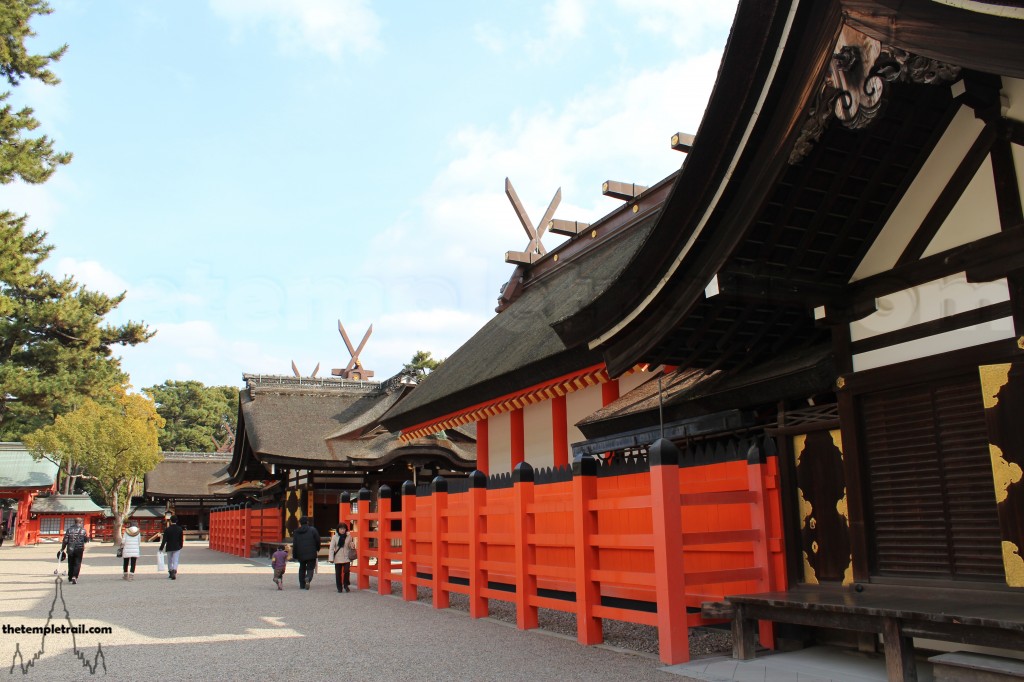
Sumiyoshi Taisha is one of the earliest examples of pre-Buddhist Shinto architecture and features in the oldest written record of Japan; the Kojiki. It was originally constructed in the early 3rd century AD by a member of a prominent local clan called Tamomi no Sukune. The shrine was endorsed by the legendary Empress Jingū Kogo (the conqueror of Korea) and she instructed Tamomi no Sukune to enshrine the Sumiyoshi Sanjin (three gods) there. Later on, she herself was enshrined in Sumiyoshi Taisha. To this day the head priests of the shrine are of the Tsumori clan; direct descendants of Tamomi no Sukune.
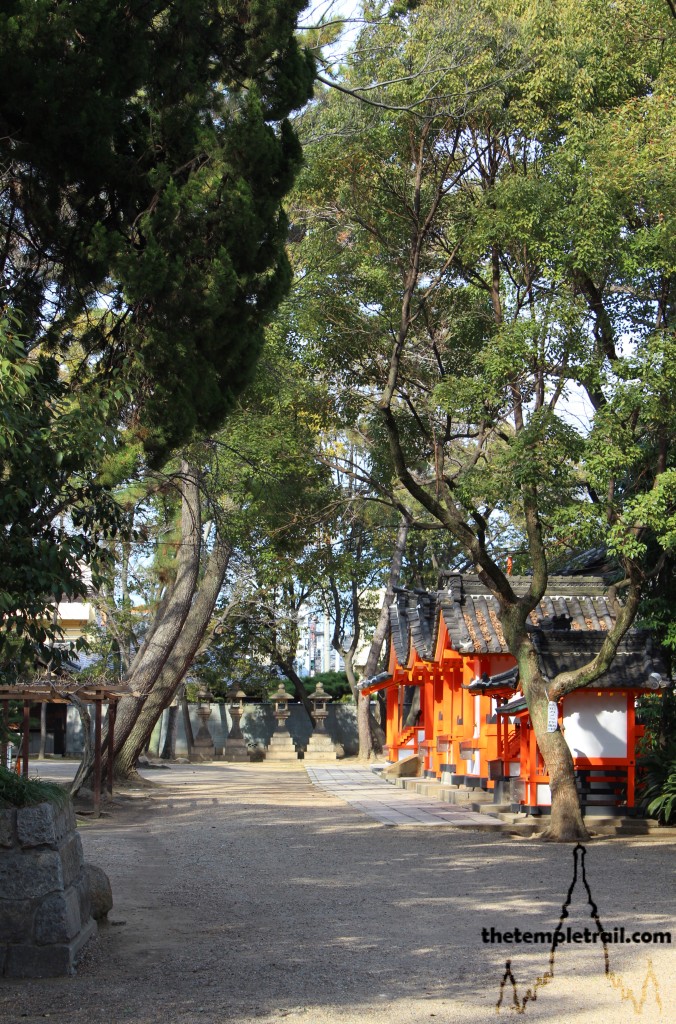
The Sumiyoshi Sanjin who are enshrined at Sumiyoshi Taisha are three important gods of the sea and seafaring called Sokotsutsuno-o no Mikoto, Nakatsutsuno-o no Mikoto and Uwatsutsuno-o no Mikoto. The shore of Osaka Bay originally brushed the shrine grounds and the connection to the sea was very strong. The three kami are also associated with the three stars of Orion’s belt, by which the sailors of ancient Japan navigated. Sailors would moor in Osaka on their way to China and other parts of Asia in order to pray for safe crossings. In actual fact, the story of Izanagi no Mikoto from the Kojiki (an ancient Shinto text) can give us a better look at the Sumiyoshi Sanjin. The story tells of the misogi (ritual cleansing) of the important kami, Izanagi no Mikoto. This produced many other kami, but in particular six related to various aspects of the ocean. Sokotsuwatatsumi no Kami (Kami at the Bottom of the Ocean), Sokotsutsuno no Mikoto (Prince at the Bottom of the Ocean), Nakatsuwatatsumi no Kami (Kami in the Middle of the Ocean), Nakatsutsuno no Mikoto (Prince in the Middle of the Ocean), Uwatsuwatatsumi no Kami (Kami at the Surface of the Ocean) and Uwatsutsuno no Mikoto (Prince at the Surface of the Ocean). Although the three princes are explicitly honoured at Sumuyoshi Taisha, all six are implied. The importance of the sea water mixing with the fresh water of the Yamato River and the performance of the misogi purification in the confluence of the two is now lost at Sumiyoshi Taisha due to the migration of the sea away from the shrine. The shrine also houses the Empress Jingū who was deified as Okinagatarashihime no Mikoto. Her son Emperor Ōjin (of the Kawachi Dynasty) was also deified (as Homdawake no Mikoto) and he became Hachiman, the god of war. The shrine is the chief jinja of the Sumiyoshi shrine network, which contains around 2300 shrines across Japan.
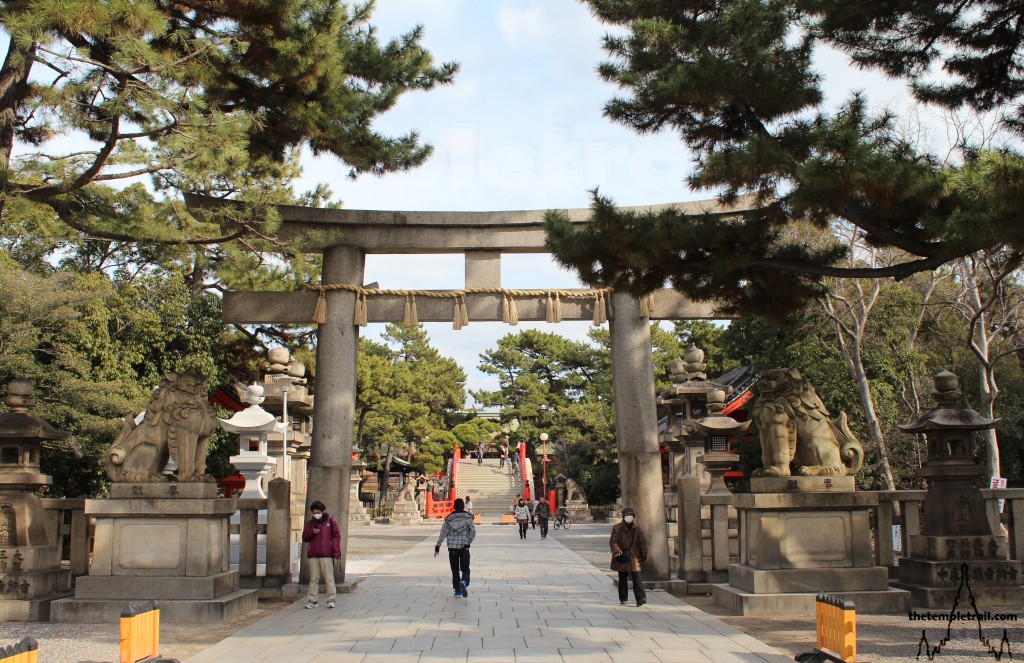
You walk up the sandō (ceremonial path) past the some of the 600 tōrō (stone lanterns) of varying sizes that mark the edge of the shrine grounds and up to a large stone torii (ceremonial gateway). The torii is flanked by a pair of komainu (lion dogs). As with most of these pairs, one is agyō (open mouthed) and the other is ungyō (closed mouthed). These komainu guard the shrine and their mouths represent a-un (om); the beginning and end of all things.
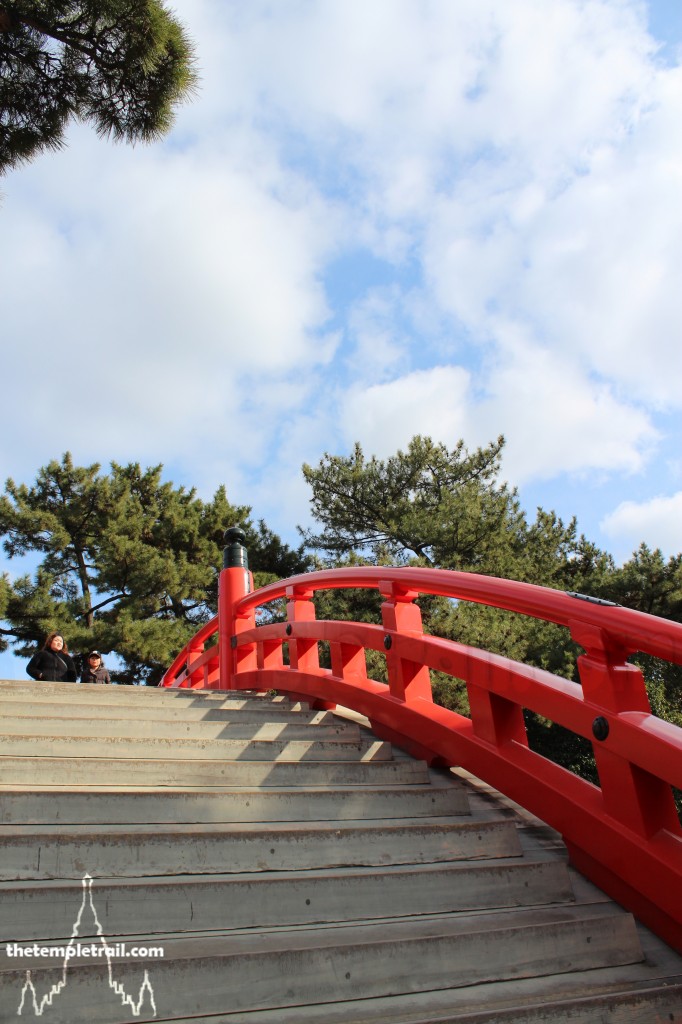
Passing through the torii and by two roofed pavilions, you come to the Soribashi (a taiko-bashi or high drum bridge). The curved red wooden bridge arcs steeply over the pond that sits in front of the precinct. You concentrate on your legs as your climb takes you almost vertically up the side of the bridge. The incline become gentler as you reach the zenith of the bridge, but then becomes precarious once more as you descend. The climb is part of the spiritual cleansing process and stops evil forces from entering the shrine.
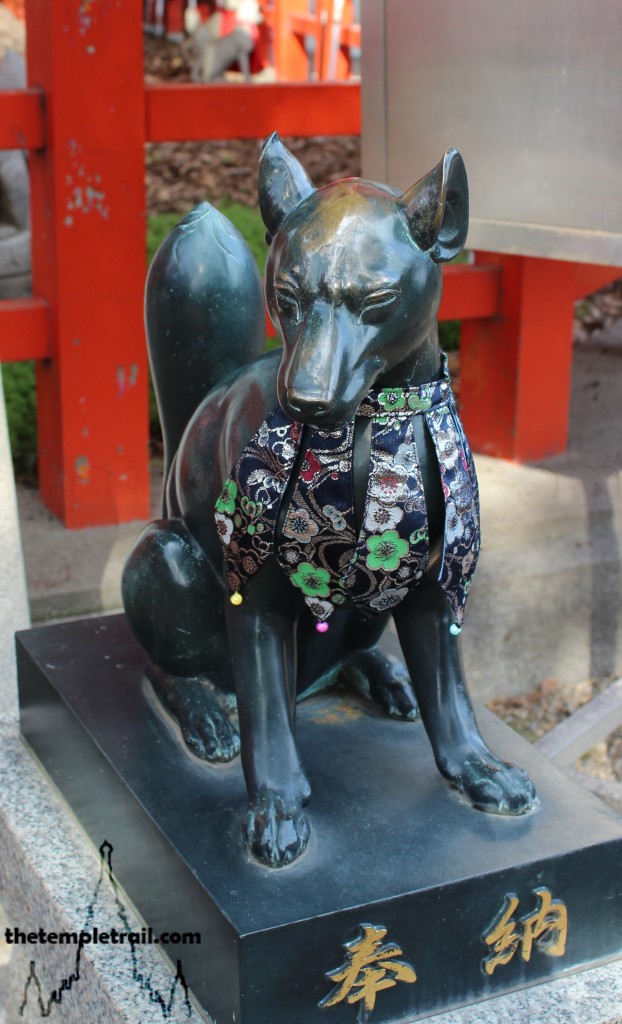
On the other side you arrive at a chōzuya (water fountain) from which you can purify your hands and mouth before entering into the inner sanctuary. To the right of the torii that marks the entry, is an ancient knotted shinboku (divine tree) that has been honoured with a shimenawa (ceremonial rope) and shide (paper zig-zags) that encircles its trunk. This god-tree is small compared to some of the others that wait for you inside the shrine area.
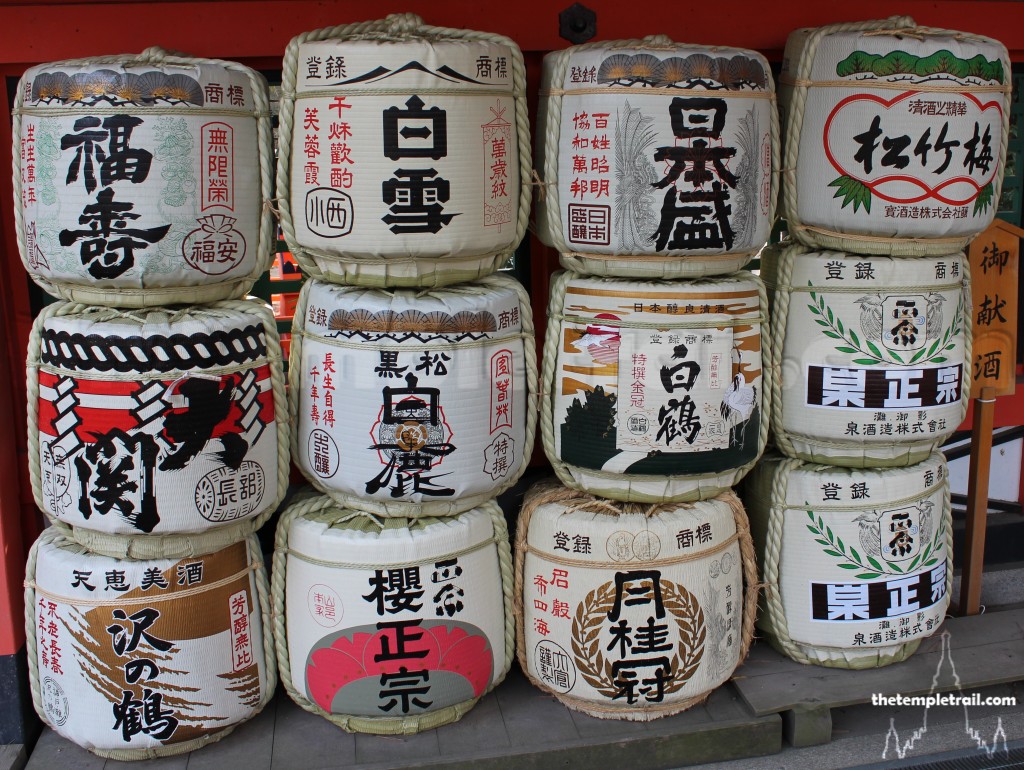
Ascending the steps up to the central shrine area, the staircase opens up to a clean space that holds four important buildings. In the corner of the enclave, to your right, are stacked barrels of o-miki (ritually purified sake) ready for festival times. To your left is a shop gallery, tended by white robed miko (shrine maidens), that sells omamori (amulets) and ema (wooden prayer plaques). Squarely occupying centre stage are the four most significant structures. Each of them is actually a composite structure made up of two separate enclosures. The building that you face is the haiden (oratory). It is the place where ceremonies can be performed by priests and which the public can stand in front of and pray. They have a bell in front of them to ring before clapping twice and praying. You cannot enter this building freely, but it is open to view.
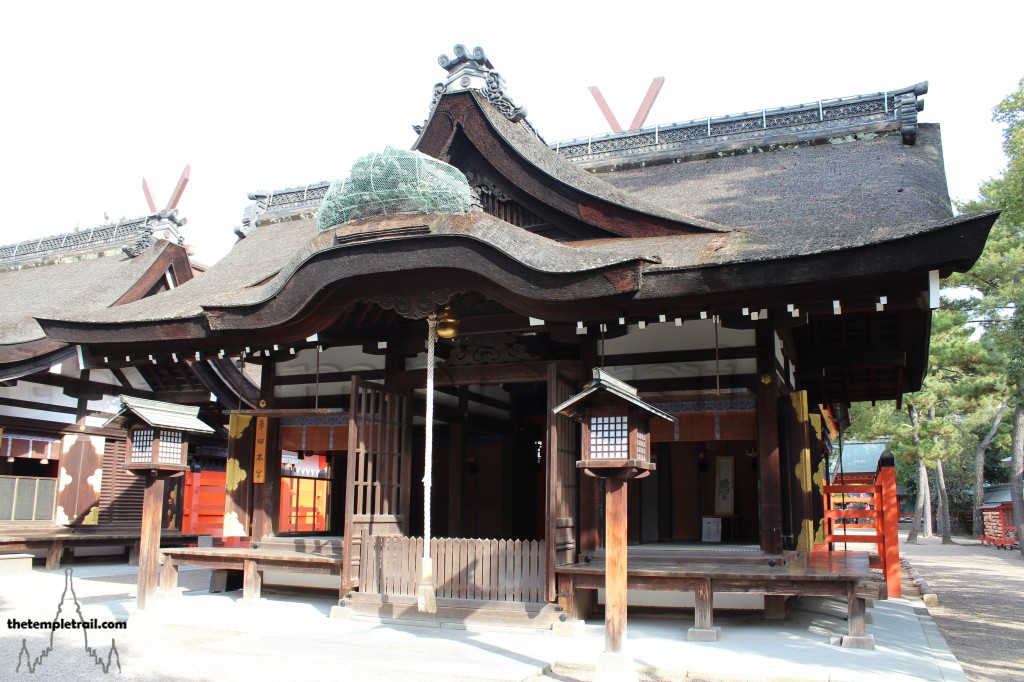
Behind the haiden is the honden (main hall) that houses the go-shintai (sacred body of the kami). Normally, the go-shintai is an object like a mirror or a gohei (wooden wand decorated with shide). It is surrounded by a shutamagaki (vermillion plank fence) and an ara-imi (fence) that separate it from the realm of humans. The honden here are hugely significant in Japanese culture. They are built in the Sumiyoshi-zukuri style. This is one of the three architectural styles used at Shinto shrines that pre-date the arrival of Buddhism. Circling the red, white and black building, you notice the typical architectural features of a Sumiyoshi-zukuri honden. The roof has okichigi (forked finials) at each end and five katsuogi (horizontal wooden billets) on the roof crest. The cylindrical support pillars are painted vermillion and the horizontal wooden slats are painted white. Standing behind these buildings, the simplicity of the structures and understated grace, from the straight-lined thatched roofs to the undecorated block colours, is beautiful to behold.
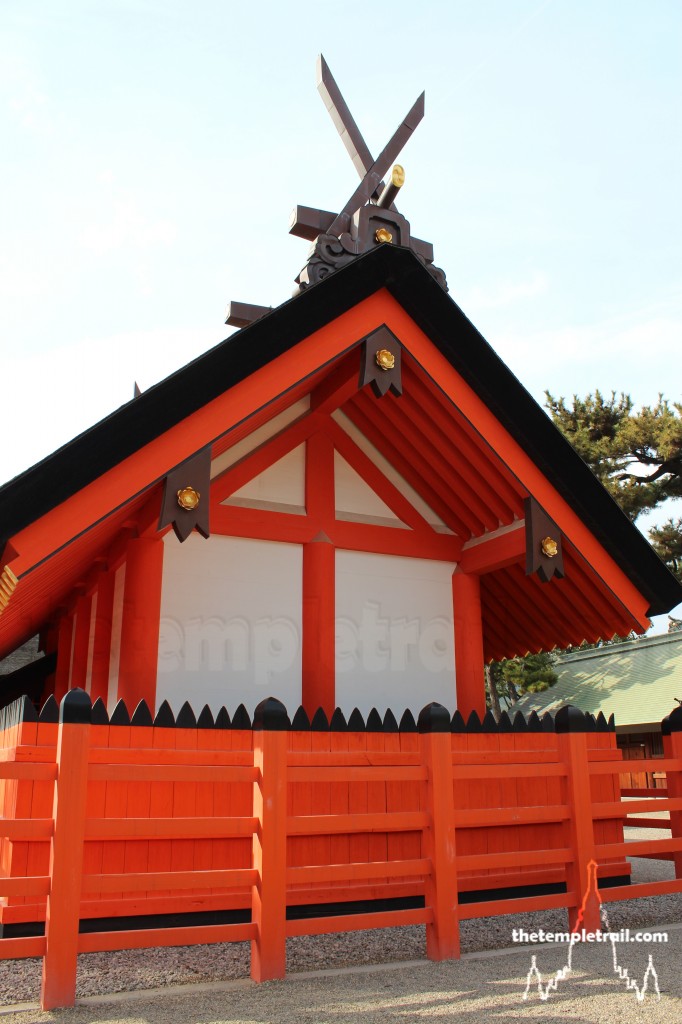
Leaving the central sanctuary and the four haiden and honden (one for each of the enshrined kami), you enter a more wooded area. Here setsumatsusha (small auxiliary shrines) are interspersed with shimenawa and shide wrapped trees that are home to kodama (tree spirits). The massive god-trees are surrounded by flags and some stand behind shrines that pay homage to them. The feeling that this is the living space of nature spirits and gods is overwhelmingly apparent as you cross from shady tree to shady tree. The sensation of being protected by supernatural forces gathers inside you and strongly surges through your nerves. These trees and the spirits they hold are the essence of ancient Shinto. Before the shrines, people worshipped their gods in the forests and mountains, by the sea and lakes. It is easy to connect to the sentiment of the religion practiced here. It is something that all humans primaevally share in common; the worship of the land around you.
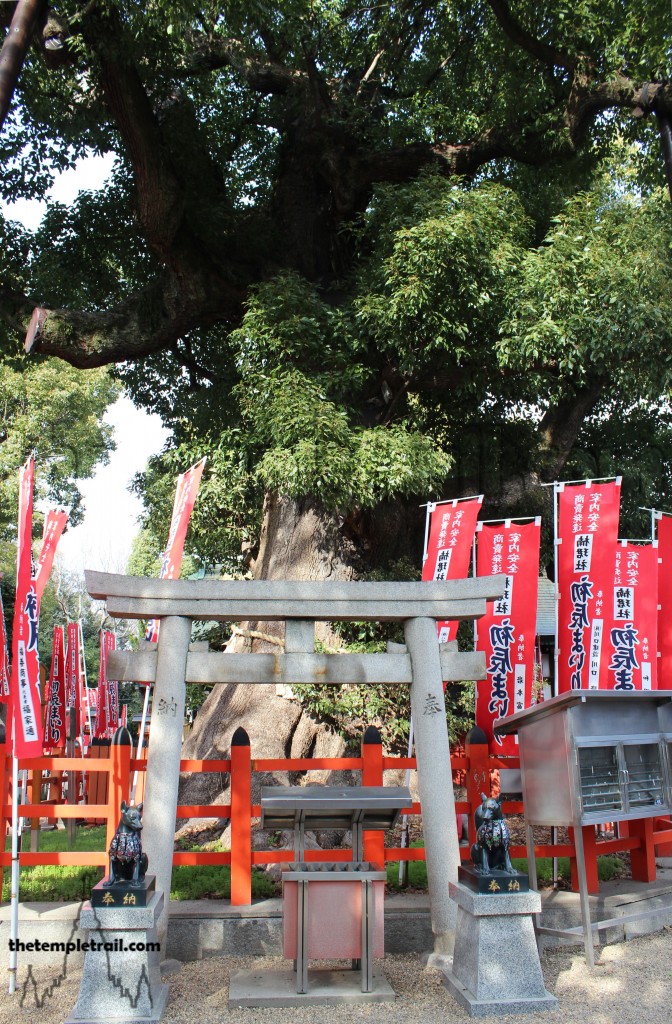
Coming back through the sanctuary, you feel a swell of elation course through you. This place is peaceful and energetic at the same time. It is a potent intermingling of crafted and natural. The red wooden shrines stand out from the green trees, yet they fuse together in a harmonious symbiosis. Walking back down the sandō, you take with you an inner knowledge that nature is part of our spiritual experience. It is part of our physical world and yet somehow it crosses into the realm of the divine supernatural.
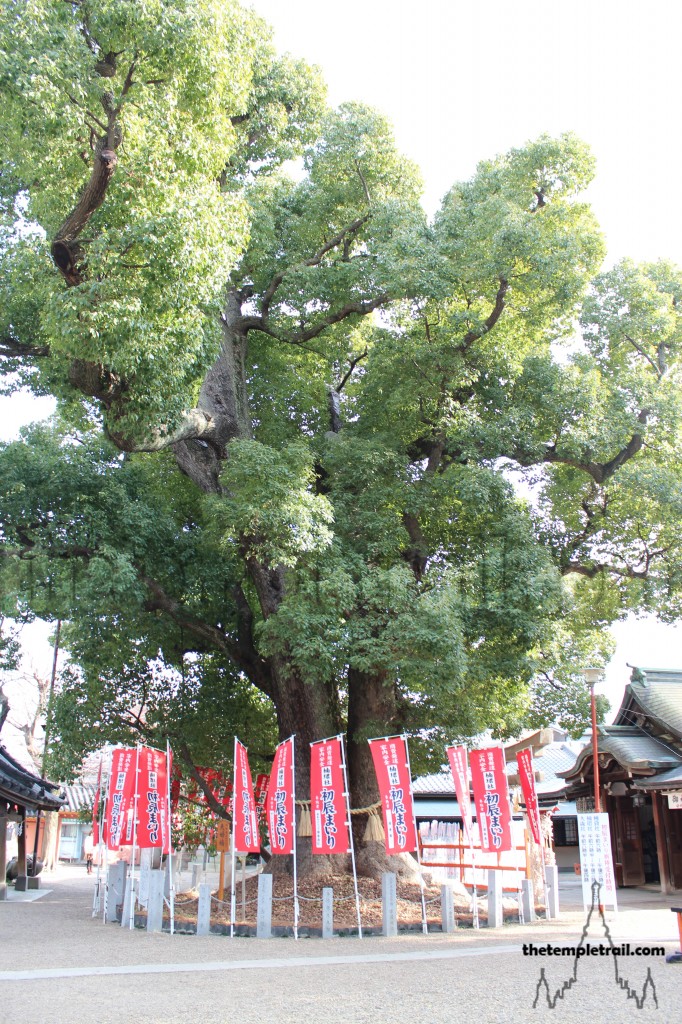

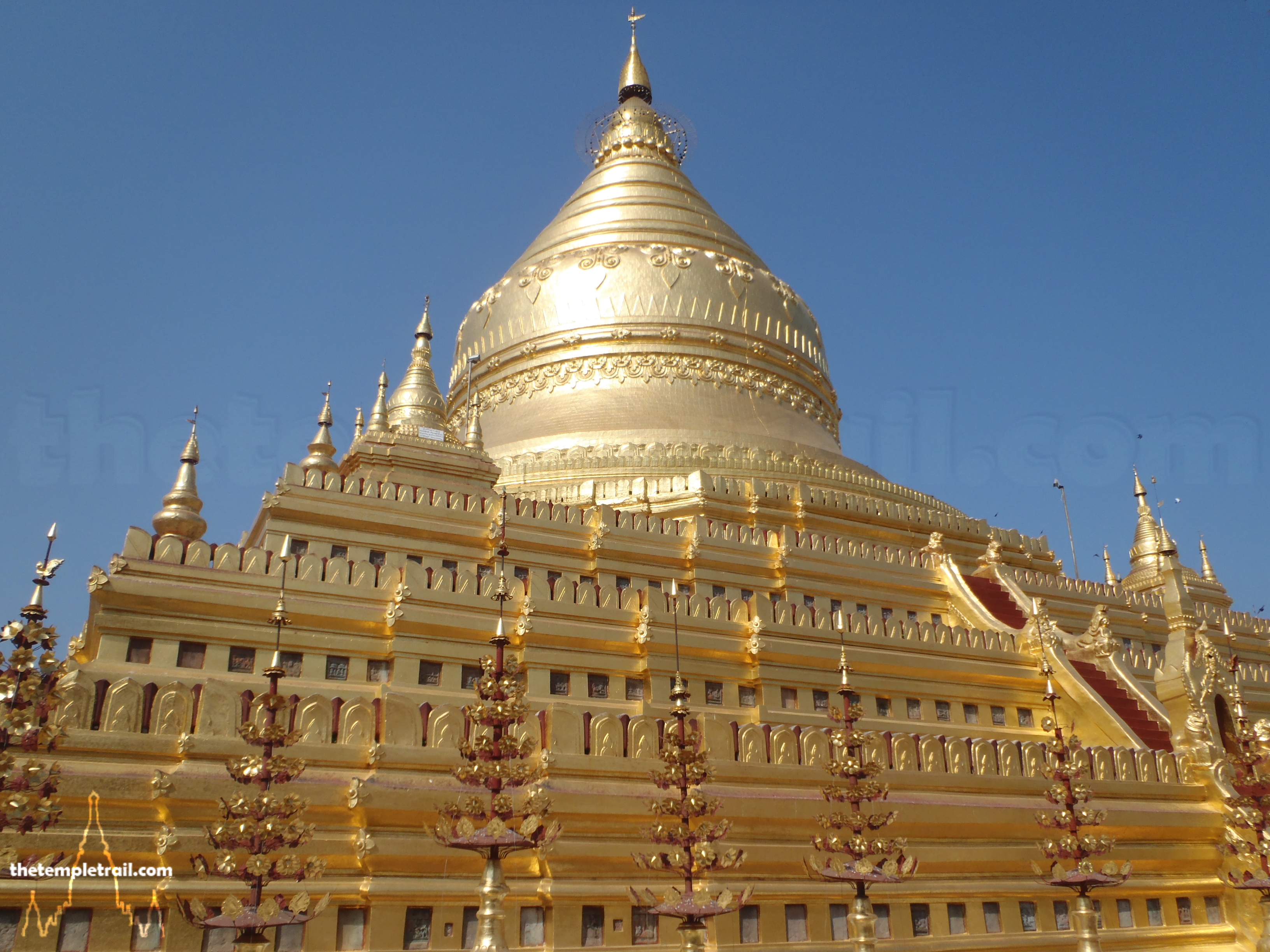 Shwezigon Paya
Shwezigon Paya